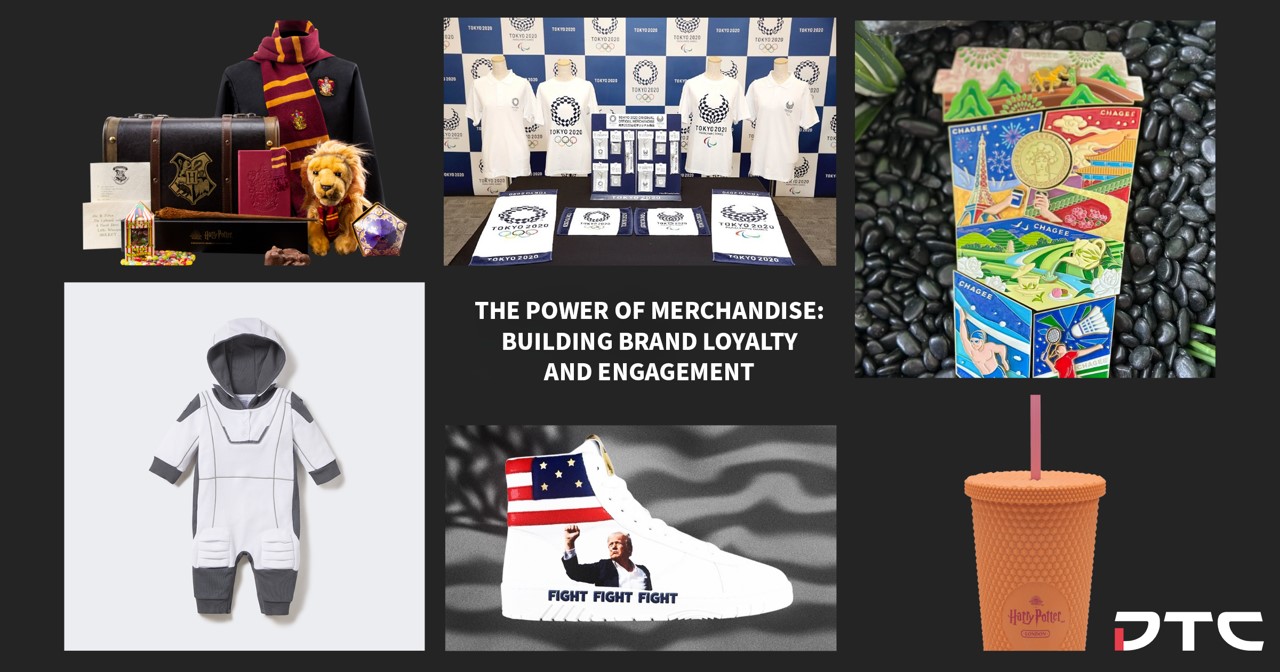
Merchandise has become a vital tool for brands aiming to connect more deeply with their audiences. Let’s explore some effective strategies that have proven successful in bolstering brand loyalty and engagement:
image: Gryffindor Gift Trunk / Butterbeer and Mugs Gift Set (source: harrypottershop.co.uk)
Merchandise has proven to be a goldmine for the movie industry, a fact humorously highlighted by Mel Brooks in his satirical movie "Spaceballs" when he joked, "Merchandising is where the real money from the movie is made." This tongue-in-cheek comment underlines a critical aspect of film marketing: merchandise is often a central element of a movie's profitability and brand visibility.
image: Harry Potter London Apricot Cup / Harry Potter London Apricot Cap (source: harrypottershop.co.uk)
image: Back to Hogwarts Pin Set / Love Potion Mini Backpack (source: harrypottershop.co.uk)
Many blockbuster films have tapped into the power of merchandising to enhance their brand’s presence and engagement. For instance, Harry Potter films have turned merchandise into a continuous revenue stream with items such as wands, robes, and the highly popular themed areas in amusement parks. These merchandising efforts deepen the magical experience for fans, allowing them to immerse themselves further into the wizarding world.
image: Star Wars: Dark Side Loungefly Mini Backpack / Star Wars Back to School Collection (source: Disney Store)
Similarly, the Star Wars franchise has mastered this strategy, creating an extensive range of products that include toys, clothing, and collectibles, significantly extending its market reach and cultural impact decades after the original movie's release.
image: Grogu Garden Stool and Tools Set – Star Wars: The Mandalorian
/Star Wars Artist Series Glass Pitcher by Will Gay (source: Disney Store)
image: TimeOut
The Tokyo 2020 Olympics demonstrated merchandise’s massive potential, generating over $127 million in sales.
Tokyo 2020 first batch of official merchandise for the Olympic Games. 15 of the 26 product lines were sold out in the online shop on the opening day of sales.
image: insidethegames.biz
Tokyo 2020 Summer Olympics products featuring Sailor Moon and other anime characters. image: Sailor Moon News
The recent Paris Olympics 2024 has continued this trend, utilizing merchandise to extend the event’s branding beyond the athletic competitions.
image credit: Bastillepost
Chagee China collectibles for Paris Olympics 2024. image credit: XiaoHongShu
Malaysia Paris Olympics 2024 merchandise. image credit: XiaoHongShu
Elon Musk’s SpaceX has made creative use of merchandise, offering items from SpaceX-themed infant spacesuits to Cybertruck-inspired cat beds.
(fr. top left) Starship Torch, Polaris Dawn Zero Gravity Indicator, SpaceX IVA Suit Figure, Kid's SpaceX Spacesuit. image source: SPACEX STORE
These unique products not only generate additional revenue but also deepen consumer attachment to the brand.
image source: TRUMP STORE
Donald Trump's use of merchandise during his presidency illustrates its potency in brand monetization.
Donald Trump’s sneakers: the FIGHT FIGHT FIGHT High Tops. image source: GQ.com
Following the attempt on his life in Pennsylvania, there was a surge in merchandise sales, demonstrating how timely and resonant merchandise can captivate consumer interest and drive engagement. Since 2015, this approach has contributed over $98 million to his branding efforts.
Sand Printing Flip Flops, Trump Mini Speaker. image credit: TRUMP STORE
(fr. top left) Yes She Can Tee, When We Fight We Win Sticker, WILLY CHAVARRIA KAMALA CAP, Harris-Walz Yard Sign. image source: Harris Walz Offical Store.
The announcement of Kamala Harris's presidential candidacy saw a rush in both official and unofficial merchandise, some selling out within minutes. This highlights the need for speed in merchandising to capitalize on momentous events and maintain relevance in public discourse.
Branded merchandise offers a more affordable cost per impression compared to traditional advertising methods.
Promotional products leave a lasting impression; studies show 82% of recipients view the company more favorably after receiving a promotional item.
Durable items such as apparel and drinkware provide ongoing brand exposure as they are regularly used over time.
Tangible items forge a personal connection with consumers, enhancing brand loyalty.
Customers become brand ambassadors as they use and showcase these items.
Exclusive and personalized items can boost customer retention and satisfaction.
Unique and innovative products often get shared on social media, amplifying organic reach.
Conclusion
Engaging Consumers with Special Brand Merchandise Collections
How F&B Giants Are Winning Hearts with Custom Branded Merch
How Retail Merchandising Turns Browsers into Buyers
Why Brands Use Mascots for Their Swag—It’s Not Just Monkey Business
